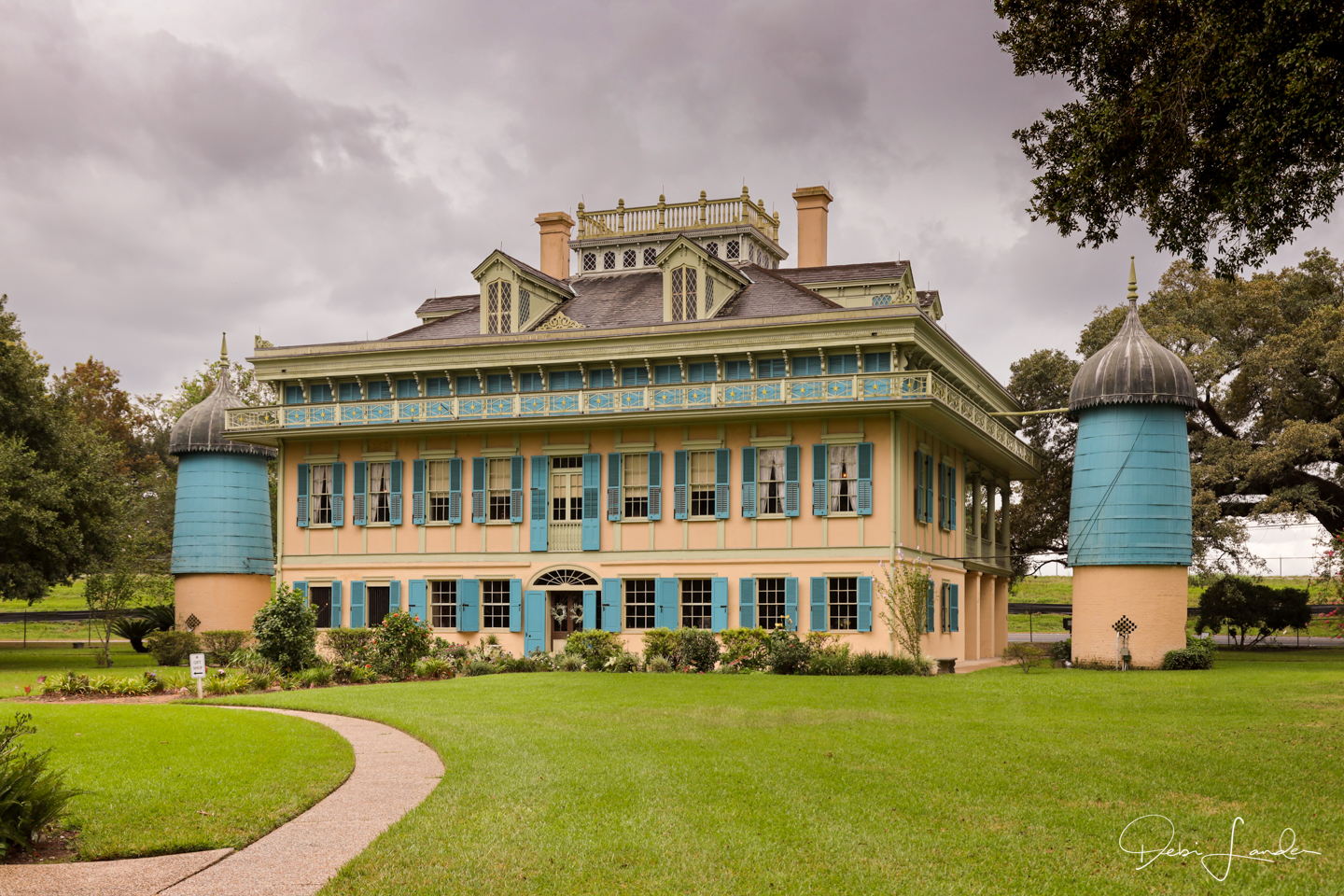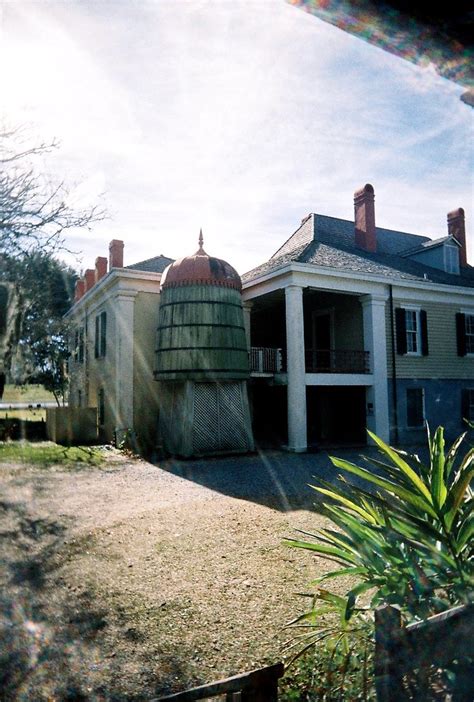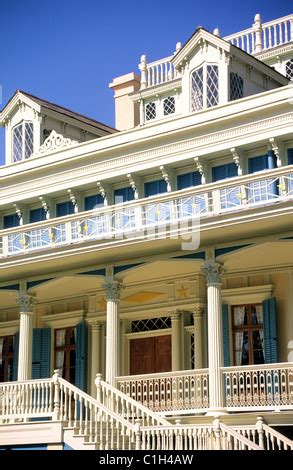Unveiling San Francisco Plantation's Secrets: 7 Facts

Nestled along the Mississippi River, San Francisco Plantation stands as a captivating testament to the antebellum era, offering a glimpse into the opulence and complexities of Louisiana's past. This unique Greek Revival mansion, often described as the "Jewel of the Mississippi," boasts a rich history that is as intriguing as its architectural grandeur.
Constructed between 1849 and 1856, San Francisco Plantation embodies a fusion of architectural styles, with its striking white columns, intricate ironwork, and vibrant pink exterior. But beyond its stunning aesthetics, the plantation holds a wealth of secrets and stories that have fascinated historians and visitors alike for generations. From its unusual name to the lives of those who inhabited it, there's much more to uncover about this historic landmark.
1. The Unconventional Name

One of the most intriguing aspects of San Francisco Plantation is its name. Unlike many other plantations named after their owners or the crops they produced, San Francisco was named after the wife of its original owner, Valcour Aime. Josephine, also known as “Panini,” was born in New Orleans and raised in Paris, returning to Louisiana with a unique sense of style and an affinity for the city of San Francisco, then known as Yerba Buena. The name was a tribute to her and reflected the couple’s travels and cultural influences.
2. Architectural Marvels

San Francisco Plantation’s architecture is a study in elegance and innovation. The mansion features a central hall plan with a striking double gallery, providing a panoramic view of the Mississippi River. Its distinctive Greek Revival style is enhanced by intricate woodwork, including the magnificent spiral staircase that dominates the central hall. The attention to detail is evident in every room, from the delicately carved mantels to the hand-painted walls and ceilings.
The Staircase: A Technical Marvel
The spiral staircase at San Francisco is a technical marvel of its time. Crafted from a single log of cypress wood, it ascends three stories without the use of nails or glue. The intricate design and precision required for its construction showcase the exceptional craftsmanship of the era.
| Feature | Technical Detail |
|---|---|
| Spiral Staircase | Cypress wood, no nails or glue, spans 3 stories |
| Ironwork | Forged by skilled artisans, featuring intricate designs |
| Ceiling Height | 15 feet, enhancing the grandeur of the rooms |
3. A Multifaceted Family
The Aime family, who called San Francisco Plantation home, were not your typical plantation owners. Valcour Aime, a successful businessman and lawyer, had a diverse range of interests, including real estate and the sugar industry. His wife, Josephine, brought a touch of Parisian elegance to the plantation, influencing its design and decor. Together, they created a vibrant family dynamic that included their children and extended family members.
Life on the Plantation
San Francisco Plantation was not just a residence; it was a bustling hub of activity. The Aime family oversaw a thriving sugar plantation, with the riverfront providing easy access for transporting sugar and other goods. The mansion itself was a center of social life, hosting elaborate parties and gatherings that reflected the family’s wealth and status.
| Family Member | Role |
|---|---|
| Valcour Aime | Owner, businessman, lawyer |
| Josephine "Panini" Aime | Influential in design, brought Parisian influence |
| Children | Contributed to family businesses, social life |
| Extended Family | Played vital roles in plantation operations |
4. A Haven for Art and Culture
San Francisco Plantation was more than just a beautiful home; it was a haven for art and culture. The Aime family were avid collectors, amassing an impressive array of art, furniture, and decorative objects. The mansion’s interior was a gallery of sorts, showcasing their taste and appreciation for the finer things in life.
The Art Collection
The Aime family’s art collection was extensive, featuring paintings, sculptures, and decorative arts from Europe and the United States. A notable piece is the 1840 portrait of Josephine Aime by French artist, Francois-Auguste Biard. The collection reflected the family’s refined taste and their connection to the cultural centers of the time.
5. The Legacy of Slavery

Like many plantations of the antebellum South, San Francisco was built and operated with slave labor. The Aime family relied on the labor of enslaved people to maintain the plantation and its operations. While the mansion itself is a testament to the wealth and status of its owners, it also serves as a reminder of the harsh realities and injustices of the past.
A Window into Enslavement
While the main house at San Francisco Plantation showcases the opulence of the era, the lives of the enslaved people who worked and lived there are often overlooked. Today, efforts are being made to tell their stories and provide a more comprehensive view of life on the plantation. Interpretive tours and exhibits now include narratives from the perspective of the enslaved, offering a deeper understanding of their daily lives, struggles, and resilience.
6. Survival Through Hard Times
San Francisco Plantation’s history is not without its challenges. The Civil War and subsequent economic hardships took a toll on the Aime family and the plantation. The mansion itself survived the war, but the family’s financial situation deteriorated. Over the years, the plantation changed hands several times, and at one point, it even served as a hospital during the Civil War.
Resilience and Restoration
Despite the hardships, San Francisco Plantation has endured. In the 20th century, efforts were made to restore and preserve the mansion. Today, it stands as a well-preserved example of antebellum architecture and a reminder of Louisiana’s rich history. The plantation’s survival is a testament to the dedication of those who recognized its historical significance and worked tirelessly to protect it.
7. A Popular Tourist Destination
San Francisco Plantation has become a beloved tourist destination, attracting visitors from around the world. Its unique architecture, rich history, and captivating stories have made it a must-see for those interested in the antebellum South. The plantation offers guided tours, allowing visitors to explore the mansion, learn about its past, and immerse themselves in a bygone era.
Visitor Experience
Visitors to San Francisco Plantation can expect a immersive experience. Guided tours provide insights into the lives of the Aime family, the architectural features of the mansion, and the broader context of the antebellum era. The plantation also hosts special events, such as historic reenactments and cultural festivals, offering a unique glimpse into the past.
| Visitor Highlights | Description |
|---|---|
| Guided Tours | In-depth exploration of the mansion's history and architecture |
| Special Events | Historic reenactments, cultural festivals, and seasonal celebrations |
| Gift Shop | Unique souvenirs, books, and mementos related to the plantation's history |
How can I visit San Francisco Plantation?
+San Francisco Plantation is open to the public. Visitors can purchase tickets online or at the plantation’s entrance. Guided tours are available, providing an immersive experience into the mansion’s history and architecture.
What makes San Francisco Plantation unique among other plantations?
+San Francisco Plantation stands out for its unique name, inspired by the wife of its original owner, and its distinctive Greek Revival architecture. Its interior, with its spiral staircase and hand-painted walls, is a showcase of exquisite craftsmanship. The plantation also tells the stories of the enslaved people who lived and worked there, providing a more complete picture of life in the antebellum South.
Are there any special events or festivals held at San Francisco Plantation?
+Yes, San Francisco Plantation hosts a variety of special events throughout the year. These include historic reenactments, cultural festivals, and seasonal celebrations. Visitors can check the plantation’s website or social media pages for upcoming events and dates.



